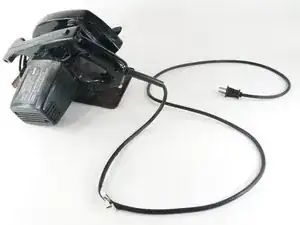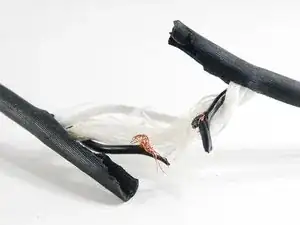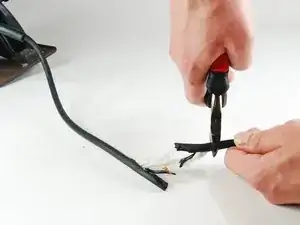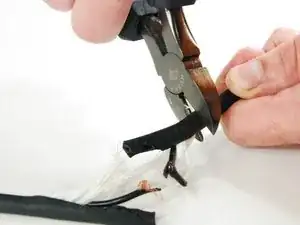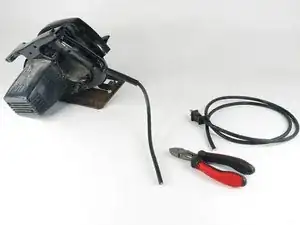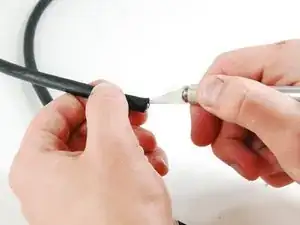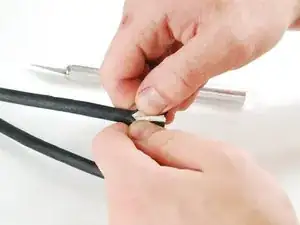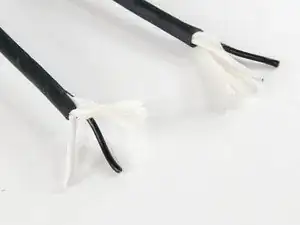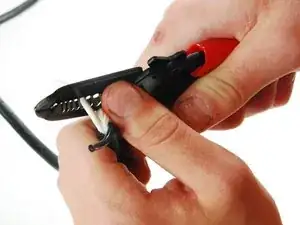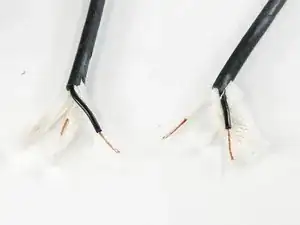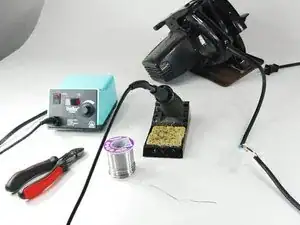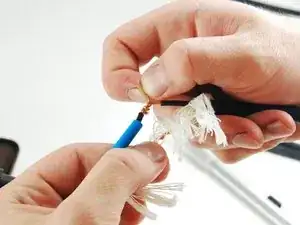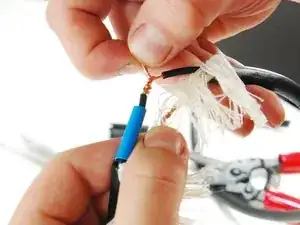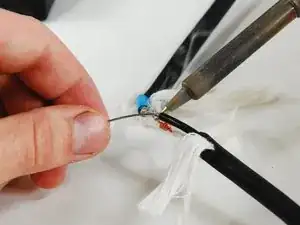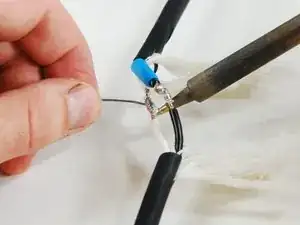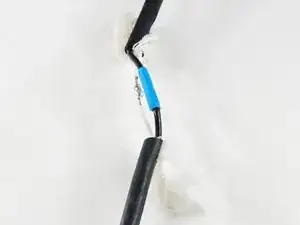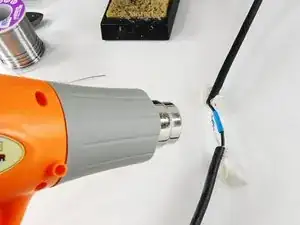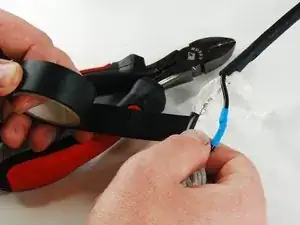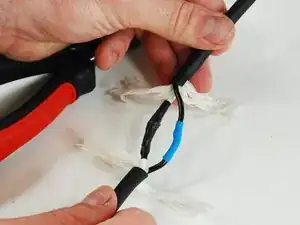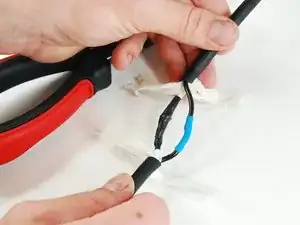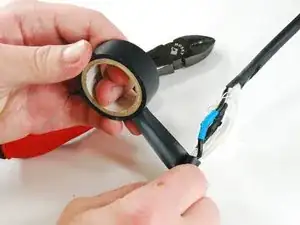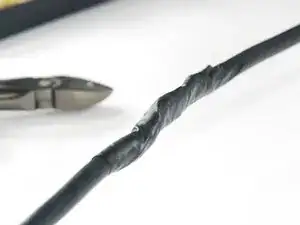Introduction
This is a common enough problem that I felt it warranted a repair guide- in addition, I wanted my trusted circular saw to get back into an operational condition. I didn't pay enough attention while working on a project and nicked the attached power cord. Needless to say, it never quite functioned the same after that- plus, the wiring would get super hot and occasionally arc! So it needed to be cut and re-spliced.
This repair procedure is meant to be used for devices that encounter residential or light-duty use. Do not follow this procedure if you are repairing a device used in an industrial or heavy-duty setting.
Keep in mind that this repair is working not only with a power tool, but also with a power cord that plugs into the wall. Be slow and careful with this repair to minimize the dangers involved.
Tools
-
-
There are three parts to the power cord on this circular saw.
-
There is the outer casing, that protects the wires from the normal wear and tear of the workshop.
-
There are the wires that carry the electricity.
-
There is some string. The string is there for added strength in the cord.
-
In the close up view you can see that the black wire is cut completely through.
-
-
-
To repair the cord, we need to remove the damaged portion.
-
Trim the entire cord past the point where the outside casing is damaged.
-
-
-
Carefully cut the outside casing back about an inch and a half to two inches.
-
A hobby knife is a good choice for this step, but it is not the only option.
-
-
-
Using wire strippers, strip a half an inch to three quarters of an inch of insulation off of each wire.
-
The amount of insulation you take off of each side doesn't have to exactly equal, but try to make it as close as possible.
-
-
-
Get your soldering tools ready. You need a soldering iron and solder.
-
You also need some insulation. You can use either heat shrink tubing or electrical tape.
-
In this guide we used heat shrink for one wire and electrical tape for the other, to show how you would use each one.
-
Splice the wires together by wrapping them around each other.
-
-
-
Solder the wires together.
-
Put a little bit of solder on the tip of the iron.
-
Hold the iron to the wire, and add the solder to the joint. When the wire gets hot enough, the solder will melt and suck itself into the wire.
-
Add enough solder and move the iron around enough to make the entire joint silver colored.
-
Once the wire is cool to the touch slide the heat shrink so it covers the joint.
-
-
-
Use a heat gun to shrink the heat shrink over the joint.
-
If you are using electrical tape, start a small loop around the joint.
-
It's hard to fit the entire roll of tape through the space between the wires, so pull off some tape then tear it off the roll.
-
Wrap the entire joint in electrical tape. I always use a double layer, going up the joint one way, then back down to where I started.
-
-
-
Wrap up the entire thing in electrical tape.
-
If you have a really big section of heat shrink tubing that will fit over the entire joint you can use that as well.
-
The string got cut at this point because there wasn't room to put it all back inside
-
Again, wrap the wire with at least two layers.
-
To reassemble your device, follow these instructions in reverse order.
7 comments
Hi Eric
If i see a broken vacuum cleaner near the trash cans, i stop and cut the power cord of.In 95% the on/off switch ist broken, because the most people kick them like a foot ball.These power cords are mostly up to 7-8 meters long. Open the black handle on your saw and connect the longer cord to the saw. This gives you more room to secure handle the power cord and you'll never have to stop right in the middle of the cut...
Never, EVER repair a cord like this! ALWAYS replace the cord with a new one!
1. The splice on this cord is not waterproof because there is no actual jacket there. Water + Electricity = DEATH!
2. The joint is weaker than the rest of the cable...if the cable gets snagged while in use, it would probably short cicuit.
3. Electrician's tape is notorious for coming unravelled over time, and thus will expose the wires underneath.
The absolute best thing to do is take the saw apart, buy a piece of cable the desired length with a grounded plug, and replace all. If this repaired saw were being used on a work site, OSHA would impose a rather hefty fine.
Charles -
When going thru the required items listed, when you select the heatshrink list, the repair will abort and shutdown.
